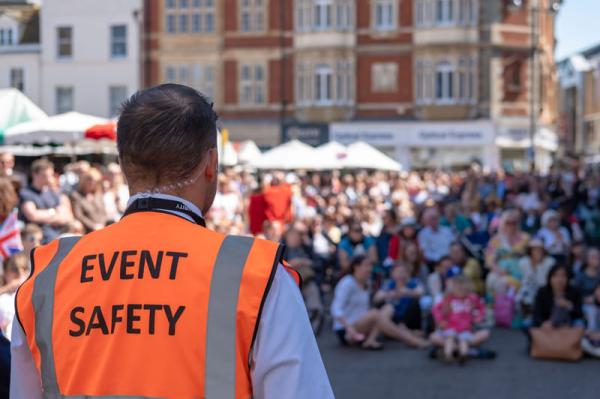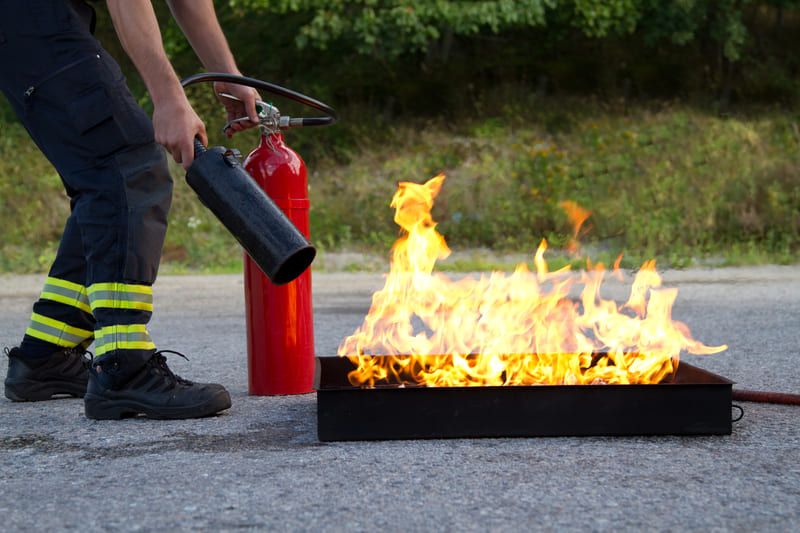Blog Post
Safety Officer Course: Protecting People And Ensuring Compliance

A safety officer, also referred to as a health and safety officer, is an individual selected and formally appointed by an employer and given the responsibility of ensuring that their co-workers are educated, informed and trained on safety practices in the workplace. The safety officer's duties include a range of responsibilities from identifying potential hazards, to introducing and implementing protocols to keep everyone in the workplace safe, but they can only do this effectively after taking a Safety Officer Course.
Taking on the role of Safety Officer comes with a large amount of responsibility, thus making it essential not just to choose the right person for the job, but also to train them and allow them to be educated and confident in the face of various situations and scenarios. EMCARE's Safety Officer Course is the perfect way to equip Safety Officers with the knowledge and practical skills they need to keep the workplace safe and create a leader for employees to follow.
Safety Officer Course: Protection and Compliance
According to the South African Department of Employment and Labour, a health and safety officer needs to be assigned in workplaces that consist of more than twenty employees. In cases of office blocks and shops, one individual needs to be assigned for up to 100 people, and two for up to 200 people. It is important to note that this is a guide, and the numbers and requirements may change depending on the workplace and the nature of work taking place at the location.
The safety officer's core responsibilities include, but are not limited to the following:
-
Assessing Risks:
The safety officer needs to assess the entirety of the workplace in order to pinpoint areas or practices that are not up to standard or may pose a future risk to the health and safety of those in the vicinity. After identifying any potential risks, the safety officer will need to implement measures or make changes to eliminate such risks. It is important to note that not all risks are equal, and the most dangerous will need to be prioritized. It is up to the Safety Officer to manage and measure these risks.
-
Implementing Safety Protocols:
Having identified risks and weak points in the processes and areas of the workplace, the safety officer then needs to develop and implement changes in order to prevent accidents or injuries. These safety protocols include emergency evacuation drills as well as general education to advise their co-workers on the correct procedures to follow in a variety of possible situations.
-
Investigating Incidents:
Whilst measures are put in place to mitigate the risk of incidents, this does not mean it is impossible for incidents or accidents to occur in the workplace. When these instances occur, it is important that they are handled with professionalism and transparency, to determine the exact cause of the incident, thus putting measures in place to prevent it from repeating in the future. The investigation brings us onto the next part, taking notes and reporting back.
-
Documentation and Reporting:
Taking records is essential to keeping on track and above board in terms of health and safety. Reports need to be taken of general compliance to regulations, of incidents or injuries that have occurred as well as changes that have been made to the protocols in place. Record keeping is essential, and the workplace can face legal implications if they are not in possession of certain documents. Documentation and reporting also allows for the safety officer to communicate the situation and status of workplace safety to management and authorities.

Safety Officer Courses From EMCARE
EMCARE offers a variety of health and safety courses, ranging from providing all employees with a general education on safe workplace practices, to specialised in-depth training for safety officers. Let's have a look at some of their options:
-
The Health and Safety Representative Course
This is legally required to have someone appointed in the workplace by Section 17 of the Occupational Health and Safety Act. It covers the basics of health and safety, with hands-on learning and a theory section that covers all of the legalities, acts and knowledge needed to bring health and safety protocols in the workplace. Attendees will graduate this course with a strong foundation of everything they need to bring into the health and safety officer role in terms of knowledge and their purpose.
-
The Safety Plus Course Package
A comprehensive safety officer course intended for individuals working in the health and safety sectors. This safety officer course covers first aid levels one, two and three, as well as firefighting and legal liability. Apart from that, participants also learn risk assessment, accident investigations and evacuation strategies. This package leaves no stone unturned and is ideal for those wanting to cover everything there is to know in health and safety.
-
The General Health and Safety Course
Covers a broad range of information relating to workplace health and safety measures, and whilst it is not a concentrated Safety Officer Course, it is the perfect way to brief and educate employees on the risks, challenges and protocols of workplace safety. Having all employees on the same page when it comes to health and safety is a great way to unite workers, whilst also making the job of the safety officer simpler and more straightforward.

Safety Officer Course: Stay Safe With EMCARE
Beyond the health and safety officer course options, EMCARE caters to a wide variety of life-saving courses for both individuals and lifesaving professionals, from fire-fighting to first aid, as well as rescue training, working at heights and tool operation courses.
If you're an employee looking to step up into the role of safety officer, or if you're an employer wanting to create a safe working environment through employee training and education, then EMCARE has a variety of options to offer you. Visit their website today to learn more about their safety officer course and create a safe and stable environment for everybody.
GET IN TOUCH
There are a few ways to reach us below. Please feel free to contact us via phone, email or you can send us a message via the form provided and we will get back to you.




















